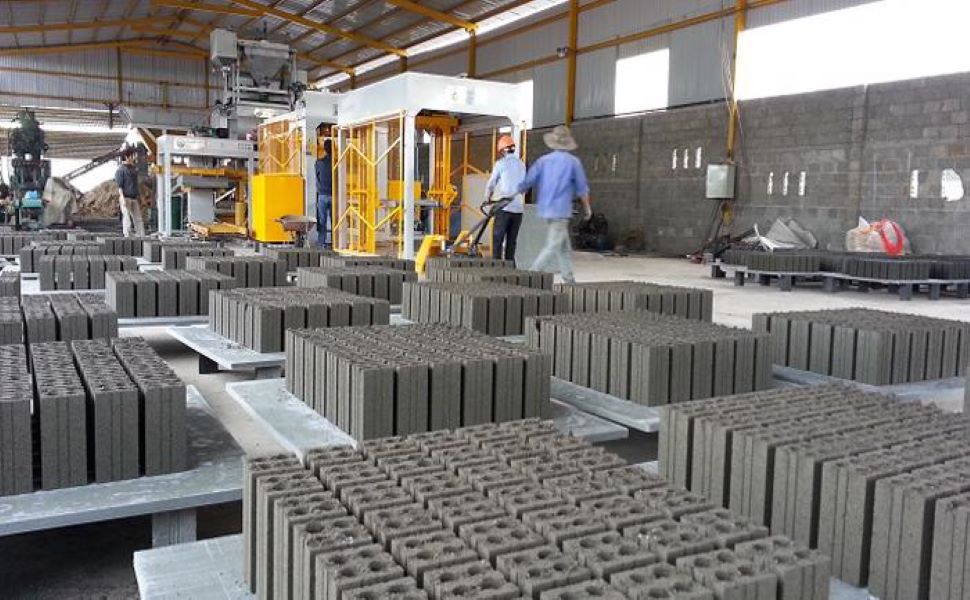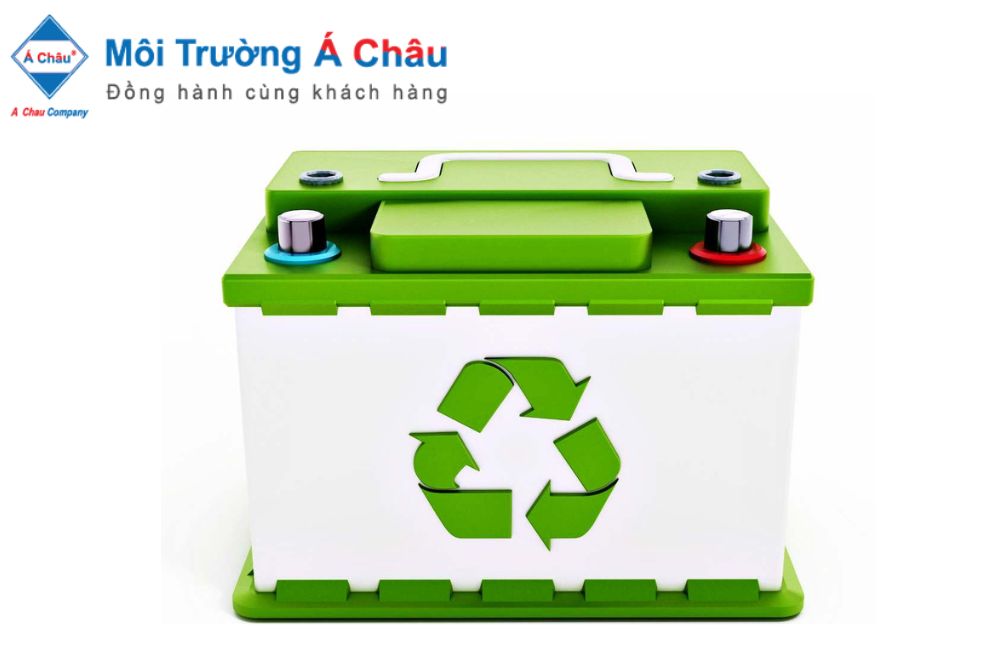Find ways to make construction materials from ash, slag, and plaster.
The Government Office recently sent a document to the Ministries of Construction, Industry and Trade, Natural Resources and Environment, Transport, Agriculture and Rural Development, Science and Technology, and the People's Committees of some localities, including Tra Vinh, on the implementation of Directive No. 08/CT-TTg promoting the treatment and use of ash, slag, and gypsum from thermal power plants, chemicals, and fertilisers as raw materials for construction.
Accordingly, Deputy Prime Minister Le Van Thanh agreed with the Ministry of Construction's proposal. Agencies are requested to strictly implement the Prime Minister's instructions in Directive No. 08.
The Deputy Prime Minister assigned the Ministry of Transport to research the use of ash, slag, and gypsum as raw materials and alternative materials in traffic works.
The Ministry of Transport has recently released a document requesting units to conduct activities connected to employing ash and slag materials from thermal power plants in traffic works to execute this request. That urges project management boards, investors, and project implementation agencies to continue supporting research and selecting acceptable project items. To employ thermal power plant ash and slag materials and to submit implementation results before December 15, 2022.
Using industrial ash and slag as construction materials: Utilizing waste, protecting the environment - Economic and Urban Newspaper
The Institute of Transport Science and Technology presides over developing and promulgating basic standards on using ash and slag from coal-fired thermal power plants to construct rural road pavement foundations.
In recent times, excessive soil exploitation has led to many environmental consequences. Provinces upstream of the Mekong Delta, such as An Giang and Dong Thap... with the advantage of abundant sand resources, considered "gold mines", are now also facing the risk of exhaustion.
In particular for traffic projects, the price of materials, namely sand, has consistently increased in the last two years, "dancing" and forcing numerous projects into tight circumstances. Several firms and construction contractors have chosen ash and slag as building and levelling materials in light of the preceding.
Therefore, experts believe that using ash, slag, and mine waste to fill highways can solve the goals of minimising negative impacts on the environment, overcoming material scarcity, and meeting people's needs. Green growth goals as the Government has oriented.
Recently, ministries, towns, and specific emission units have attempted to carry out the responsibilities prescribed by the Prime Minister in Directive No. 08/CT-TTg with favourable outcomes. Until now, the Ministry of Construction has produced and issued or transmitted all standards, rules, technical instructions, and economic and technical norms on water treatment to relevant bodies. Manage and utilise ash, slag, and gypsum as raw materials for manufacturing building materials and construction projects, including 19 Standards, 01 Regulation, 7 Technical Instructions, and 03 economic and technical forms.
Technical standards: TCVN 6882:2001 Mineral additives for cement, applied to fly ash and bottom ash; TCVN 7570: 2006 Aggregates for concrete and mortar, applied to bottom ash; TCVN 4315:2007 Granulated blast furnace slag used for cement production; TCVN 8262:2009 Fly ash – Chemical analysis method; TCVN 8256:2009 Plasterboard – Technical requirements; TCVN 8257:2009 Plasterboard – Test method; TCVN 8825:2011 Mineral additives for roller compacted concrete, applicable to fly ash and bottom ash; TCVN 8654:2011 Plaster – Chemical analysis method; TCVN 9807:2013 gypsum used for cement production; TCVN 10302:2014 Fly ash active additive for concrete, mortar and cement; TCVN 10379:2014 Soil reinforcement with inorganic binders, chemicals or synthetic reinforcement, used in road construction - Construction and acceptance (with regulations on using fly ash as inorganic binder) ; TCVN 11586:2016 Finely ground blast furnace slag for concrete and construction mortar; TCVN 11833:2017 Phosphorus gypsum as an additive for cement production; TCVN 11860:2017 Thermal power ash and slag - Method for determining free lime content; TCVN 12249:2018 Ash and slag from coal-fired thermal power plants as backfilling material – General requirements; TCVN 12660:2019 Ash and slag from coal-fired thermal power plants for road base – Technical requirements, construction and acceptance; TCVN 12261:2019 Coal combustion products – Terms and definitions; Decision No. 375/QD-DHXD dated March 28, 2019 of the Principal of the University of Civil Engineering on promulgation of Facility Standards TCCS 01:2019/DHXD Technical design, construction and acceptance of level ground treatment CFG pile; Decision No. 376/QD-DHXD dated March 28, 2019 of the Principal of the University of Civil Engineering on promulgating basic standards 02:2019/DHXD Technical instructions - component selection and brick quality control concrete uses crushed stone waste and fly ash.
Technical regulations: QCVN 16:2017/BXD National technical regulations on construction materials and products.
Technical instructions: Decision No. 430/QD-BXD dated May 16, 2017, of the Minister of Construction on Technical Instructions "Iron slag and steel slag used as construction materials"; Decision No. 3986/QD-BNN-XD dated October 12, 2018, of the Minister of Agriculture and Rural Development (MARD) promulgating Guidelines for the use of fly ash in irrigation works and dykes; Decision No. 216/QD-BXD dated March 28, 2019 of the Minister of Construction promulgating Technical Instructions for using coal-fired thermal power ash and slag for backfilling; Decision No. 217/QD-BXD dated March 28, 2019 of the Minister of Construction promulgating Technical Instructions for roller-compacted cement concrete pavement using fly ash; Decision No. 218/QD-BXD dated March 28, 2019 of the Minister of Construction on promulgation of Technical Instructions for Reinforcement of soft soil foundations - Whole mass reinforcement method using fly ash; Decision No. 393/QD-BXD dated May 21, 2019 of the Minister of Construction promulgating Technical Instructions for using phosphorus gypsum and FGD gypsum as raw materials for gypsum board production; Decision No. 788/2019/QD-VKH dated May 27, 2019 of the Director of the Institute of Construction Science and Technology on promulgating technical instructions for using fly ash from Duyen Hai 1 thermal power plant to produce high-strength concrete B20 – B40.
Technical and economic forms: Decision No. 456/QD-BXD of the Ministry of Construction, dated May 28, 2019, published the projected norms of various building works employing ash, slag, and thermal power materials, including standards Norms for road base work and levelling; Norms for cement concrete fly ash piles (CFG piles); Norms for ash and slag transportation.
The Ministry of Construction is still tasked with completing the TCVN national standard on "Phosphorus slag for cement and concrete production" (due to be finished and released in 2022). Simultaneously, a document instructs cement companies and cement grinding stations to enhance the study and use of ash, slag, and gypsum as raw materials and additives in production.
The treatment and use of ash, slag, and gypsum as raw materials for the production of building materials and in construction projects are promoted by ministries under Prime Minister Directive No. 08/CT-TTg. Declared by the state management field given.
Indeed, the Ministry of Natural Resources and Environment (MONRE) published Circular No, 02/2022/TT-BTNMT, stating that fly ash from thermal power plants' coal combustion processes is treated as standard industrial solid waste rather than managed. Control hazardous waste thresholds by previous environmental technical rules. This regulatory reform makes using ash and slag from coal-burning thermal power plants easier.
On the other hand, the principles and criteria for adding charges for processing and consuming ash and slag to the electricity price are approved by the competent authority if the power plant has a project for treating and consuming ash and slag. The Ministry of Industry and Trade has also explicitly established waste, emissions, and environmental protection criteria in Circular No. 57/2020/TT-BCT.
Meanwhile, the Ministry of Science and Technology has continued to prioritise and support the implementation of scientific and technological tasks on research using ash, slag, and gypsum as raw materials to serve various industries and fields. Production sector. At the same time, coordinate to appraise the draft QCVN on solid waste landfills. Furthermore, appraise the draft document TCVN Concrete using fly ash in irrigation works (expected to be announced in 2022).
Municipalities have carried out provincial-level science and technology initiatives to investigate using ash, slag, and gypsum as raw materials in manufacturing building materials and construction projects. Create favourable circumstances for firms to engage in the processing and utilisation of this source of industrial byproducts.
Furthermore, several municipalities have successfully carried out propaganda campaigns and issued papers mandating building production facilities to research and employ ash and slag as raw materials in manufacturing construction materials.
Source: moit.gov.vn














